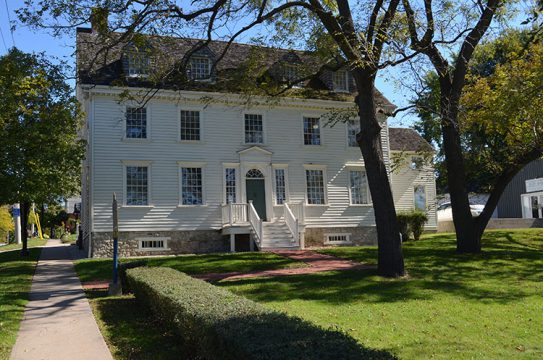
Built in 1798 on the south shore of the Detroit River in Sandwich, the Duff-Baby House is named for its first two loyalist owners, Alexander Duff and James Baby. Recognized among the most significant late 18th-century landmarks in Upper Canada, the house retains its original orientation to the river and reflects some of the principal themes and events shaping the province’s early history.
Alexander Duff (1770-1809), one of the founders of Sandwich, built the house in 1798 and used it as a base for his fur-trading operations for nine years. James Baby, a prominent Upper Canadian politician, military officer and businessman from an old Quebec family, purchased the house from Duff in 1807. During the War of 1812, Baby is reputed to have hosted a dinner attended by the great Shawnee chief Tecumseh. The house survived attack, occupation and looting by American troops. In his claim for losses, Baby stated that it had been “stript.” The older Neo-Classical interior fittings appear to date from the house’s post-war refitting.
The house displays several architectural influences. It has French characteristics such as timber wall framing with brick infill, a steeply-pitched roof and dormers. In its layout and dimensions, it is a North American adaptation of the Georgian style. The original one-acre complex included a store, a stable, other outbuildings, a wharf and an orchard. The Baby family lived here until 1871. Dr. William Beasley bought the property for his home and medical office in 1905. The Trust acquired the house in 1979 from his daughter, Isobel Beasley.
Duff-Baby House and Interpretation Centre:
Open only on June 10, July 8, August 26, September 16, October 14, November 4 and December 9 — visit the City of Windsor’s website for details and hours.